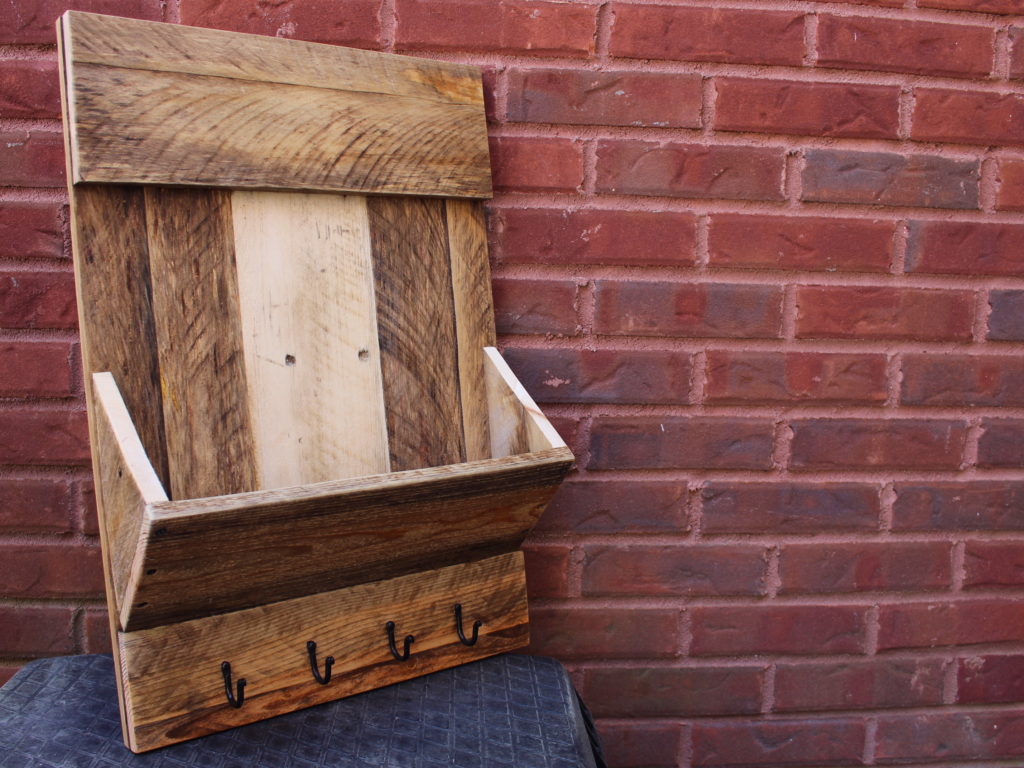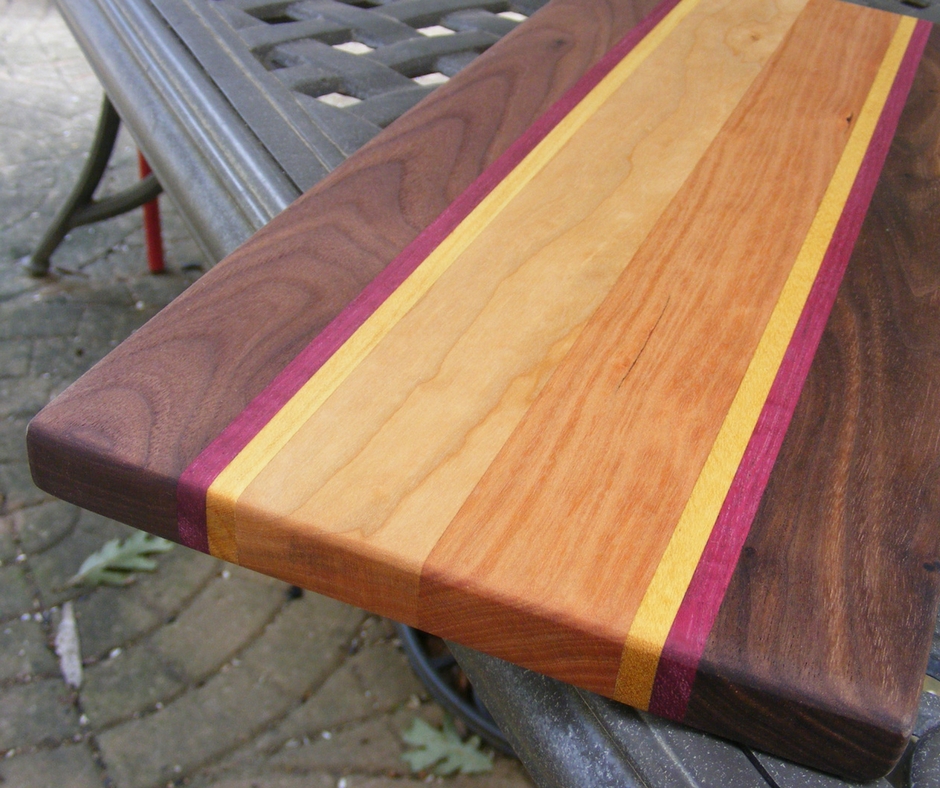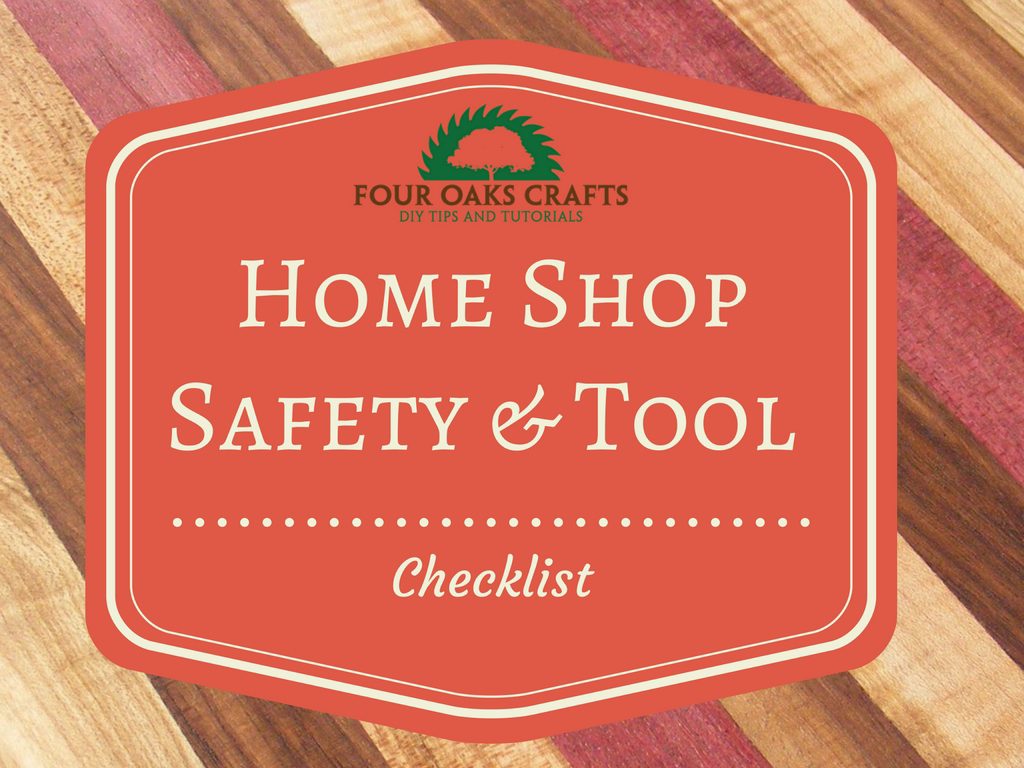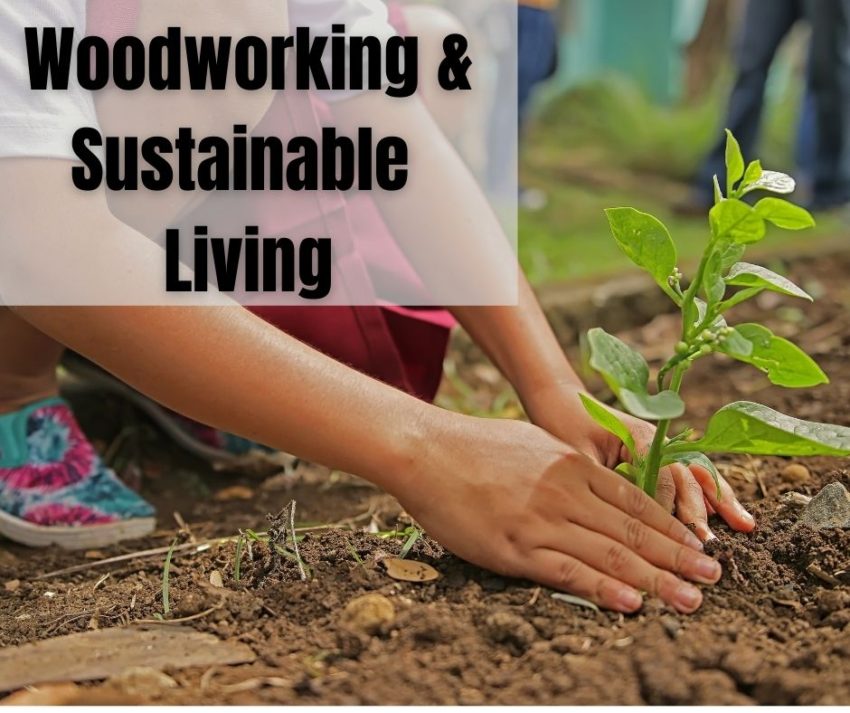In this article, I’ll discuss woodworking and sustainable living practices that will hopefully benefit our planet and our lives.
I’m not an environmental doomsayer, but I deeply care about keeping our environment clean and not abusing or depleting resources (natural or manmade) because future generations will need those recourses as well.
As a woodworker, engineer, and outdoorsman, I’m constantly thinking about the environment and how my lifestyle impacts the world. Together we can make several small or big changes to be better stewards of the planet.
Also, please don’t take this article as a way to guilt or shame you into sustainable living practices. We get to live in this amazing free country and have the opportunity to make wise choices. I appeal to your desire to keep the environment clean and vibrant. Don’t all of us want that for ourselves and our kids and grandkids?
And when I say sustainable living, I believe there are many other benefits besides the environment.
Hopefully many of these are near and dear to your heart as well:
- Saving money
- Living a minimal lifestyle
- Less stress
- Being healthy
- Learning new skills and practices
- Spending more time on relationships rather than things.
So below, I’ll dive into a few ways that you as a woodworker (or non-woodworker) can put sustainable living into practice. Don’t worry about doing it ALL. Even if you can do one or two things, it can make a difference.
Upcycling

Upcycling is different from recycling. With upcycling you take a manmade product and find a way to reuse it for a functional or artistic purpose. So look around your home and think about how to recreate something into a beautiful craft or work of art. As a woodworker or crafter, you have a great opportunity here.
Below are a few projects where I have tried to practice what I preach.
- Dog Feeder made with pallet boards
- Pallet Board Bottle Opener
- Key Ring Hanger and Mail Organizer
- Expired Hardhat Birdhouse
- Solar Lantern
- Deer Antler Crafts
- 30-06 Board Game
- Wine Bottle Bird Feeder
Pallet wood is a wonderful way to reuse lumber that would probably get thrown into the landfill or discarded. Check out my Pallet Disassembly Video to learn about where to find pallet wood and how to disassemble pallets.
Recycling

If you don’t have time to upcycle, figure out routine ways to recycle. Perhaps you can get a separate recycling bin that goes with your garbage pickup service. Sometimes you’ll need to research how to recycle certain things, but start to think about what you throw into your normal trash bags. Can some of those things be recycled? Don’t know? Google it. Learn about recycling centers near you that will take items for recycling.
Here’s a short list of items to think about:
- Glass bottles & aluminum cans
- Cardboard boxes
- Paper products
- Batteries
- Old electronic devices
- Printer cartridges
- Coffee pods
- Plastic bags
Find ways to donate used items rather than throwing them away (books and clothes for example). You also gain tax advantages by doing this.
If you’re a gardener, consider creating a compost bin. Instead of throwing away coffee grinds and banana peels, place them in your compost bin. Then use the compost for your yard or garden.
To start with, think about ways to avoid having to recycle. For water and coffee, I consistently use reusable/washable containers instead of plastic bottles or styrofoam cups.
In general, try to cut down on disposable items. It’s crazy how much disposable and non-biodegradable products we use. And they’re filling up our landfills at an unbelievable rate. Not to mention the energy and petroleum expended to create these products.
Stop using your printer. Or at least curtail the amount of printing you do. Okay, I realize there are times we need to print stuff, but seriously — most of the time we don’t need printers anymore.
Save Energy (Save Money)

Start by calling your utility company and getting a free energy audit. They can evaluate your house and find air leaks and determine if you have enough caulking, weather stripping or insulation in your attic.
If you have an older air conditioner or heat pump, consider investing in newer units that are energy efficient. You’ll pay a little money up front, but you’ll save on your power bill for many years to come.
Solar power is becoming popular especially in areas where power bills are very high. You’ll have to do your research and you’ll have to spend a little money, but the savings on power bills could be humongous.
A simple and cheap way to save energy is to convert your incandescent lights to LED lights. LED lights use less energy and put off less heat. They also will last longer than the standard incandescents.
Invest in a new thermostat like the NEST thermostats or similar brands. You can easily program it and control it through an app on your phone. Having a newer thermostat can save you lots of money in the long run.
Here are a few other simple ways to save energy:
- Do more outdoor cooking or grilling to keep heat out of your house in the summertime.
- Install ceiling fans in your living rooms, kitchen and bedrooms.
- Check with your utility company about Time-Of-Use (TOU) rates.
- Turn off lights not being used.
- Invest in energy efficient appliances.
- Monitor your thermostat and program for optimum use.
Plant More Trees

As a woodworker, I get really excited about this one. After all, if I’m going to use wood for projects, it makes sense to create more trees. Wood is a very sustainable resource, but we have to remember to plant more of them.
Trees are great for the environment. If you think back on your high school biology class, they create oxygen and take carbon dioxide out of the air. You know — that little process we call photosynthesis.
Consider annual events like Arbor Day and Earth Day and look for local groups and projects that plant trees. Check out the Arbor Day Foundation website and learn about their projects and how to get free trees to plant.
Maybe you have a large yard or pastures not being used. Consider planting more trees on these spaces. My dad has a small pasture, and he’s letting the trees take it back over.
If you’re a woodworker who likes to use green wood, please don’t cut down perfectly good trees. There are many ways to find green wood.
Consider these sources for green wood instead:
- Use tree trimmings or lumber from downed trees.
- Check with power line tree trimmers and find out where they are working.
- Comb storm-damaged areas for blown over trees. Help people by cutting and removing those trees.
- Look for firewood that can be transformed into a project.
- Make arrangements with landowners who are needing to clear their land. Always get permission to acquire wood off other properties.
- Or if you have a problem tree, I don’t see any reason not to take it down.
I have also written a helpful article on Finding Wood for your DIY Projects. Also, check out this project I made from a maple tree my dad had to cut down in his yard. The tree was creating problems by being too close to his house.
Saving Water

Yes, water gets recycled in nature and we generally have an abundance, but that may not always be the case. It can become scarce especially during times of drought and overuse. And think about the energy we have to expend to extract, treat, purify, and transport water. Water also must be used in manufacturing processes and the production of electricity.
Here are a few tips on saving water and maybe lowering your water bill:
- Add water flow restricters on shower heads and sink faucets.
- Fix leaking toilets or faucets.
- Use an energy efficient dishwasher and washing machine.
- Take shorter showers. Try a 5-minute shower.
- Flush toilets only when necessary. Reduce flush amounts.
- Turn off the tap while you shave or brush your teeth.
- Water your lawn and garden sparingly and preferably do it in the morning or evening to keep down on evaporation.
- Use mulch around your plants and shrubs. Or choose plants that don’t need much water.
Here is a project I’ve had on my bucket list for a while: How to Build a Rain Barrel. A great way to harness rainwater and use the water for your outdoor plants or garden.
Use Eco-Friendly Products

It’s good to be conscious of the chemicals and products we use. As I mentioned before, we’ve gotten reckless with disposable and non-biodegradable products. Here is a good article about Eco-Friendly Cleaning Products And here is another article on 7 Reusable Alternatives for Products You Use Everyday.
And I know you woodworkers are thinking — let’s use more wood products since wood is sustainable and biodegradable. And wood is beautiful. Yes, yes, and yes!!
Just think about these wooden product possibilities:
- Wooden kitchen utensils (spoons, spatulas, bowls, mugs, etc.)
- Cutting boards
- Planters and raised gardens
- Canes and walking sticks
- Writing pens, letter openers, desks, clipboards
- Children’s toys
- Yard games (e.g. cornhole boards)
- Wall art and picture frames
- Tables and furniture
- Indoor and outdoor decor
Can you tell I’m somewhat bias toward woodworkers being champions of sustainable living?
I would also challenge my fellow woodworkers to think about the cleaning products and finishing products they use in their shop. Think about when you can go with a minimal finish. Think about what may have an impact on your own health. And just because a project is for the outdoors, doesn’t necessarily mean you have to use treated lumber. Some lumber like cedar holds up very well outdoors.
Instead of buying expensive jigs made out of metal, build your own jigs made out of wood. And this will save you money.
Buy wood from reputable dealers to make sure they are buying from sustainable sources. Generally, this isn’t an issue unless you may be purchasing exotic woods. Just make sure you’re getting it from a responsible source.
Consider Renewable Energy

As a woodworker or DIYer you’re probably already doing this and didn’t realize it. But think about your tools. Your battery-powered drills for example. Battery-powered tools have become more reliable and powerful. Lithium battery technology has come a long way.
Going to renewable energy can be a more expensive option for many, but the costs are moving down. Solar is a good example. Just a few years ago it cost about $15+ per watt for solar panels and now it’s less than $1 per watt.
Adding solar to your house may not be cost effective for everyone. Or even possible. At my house for example, the roof is very shaded and it slants directly toward the east and the west. The whole south side is totally shaded by trees. The best option is to have your panels predominately pointing toward the south (here in the Northern Hemisphere).
If you do consider roof-top solar, I’d recommend contacting your utility company first. Most utility companies have solar programs now and they can recommend a reputable solar developer who can work with you from start to finish. You don’t want to deal with a fly-by-night company and be left with a system that’s not properly warrantied or supported.
About 2.5 years ago, I decided to reduce my carbon footprint a little more by changing out my gas-powered lawnmower to a battery-powered mower. Checkout my EGO Electric Lawn Mower Review to learn more about my experiences with this lawn mower. There are also other good brand names out there like Ryobi. The EGO is still going strong, and I love it. It will mow my front and back yard on one charge. It’s very lightweight, and I don’t feel as tired after mowing for about an hour.
And about just over a year ago, I took the plunge and bought an electric car. You can read my post — First Year Electric Car Experience — and learn more about my experiences and the pros and cons of owning an electric car.
I love my electric car and don’t regret buying one. It’s stinking fun to drive, and I haven’t missed the gas stations. I still have two gas-powered vehicles, but I use them for really long trips and my truck for hauling things. The electric car has become my go-to car for everyday use, and I haven’t had any problems so far.
With the rise of companies like Tesla, I believe the electric car is no longer a novelty or experiment. They are here to stay and will eventually join the mainstream. I realize electric cars aren’t for everyone, but I’d recommend doing a test drive. They are a little more expensive, but that can sometimes be offset by lower maintenance costs, lower fuel costs, and government subsidies.
There you have it. I hope you enjoyed reading about woodworking and sustainable living practices. And now it’s your turn. Please leave additional ideas in the comments section or let me know if you have any questions.
As I mentioned before, don’t feel like you need to do it ALL. Just try one or two things. Understand that there are more benefits than just the environment. I encourage you to lead by example and teach these practices to your kids and grandkids.

Are you starting up a new shop? Want to work safer in your shop? To help you answer these questions I've put together a 2-part checklist -- Home Shop Safety & Tool Checklist.
I will also send you updates of my latest woodworking and DIY projects. You can get all this by subscribing to my free email newsletter.






